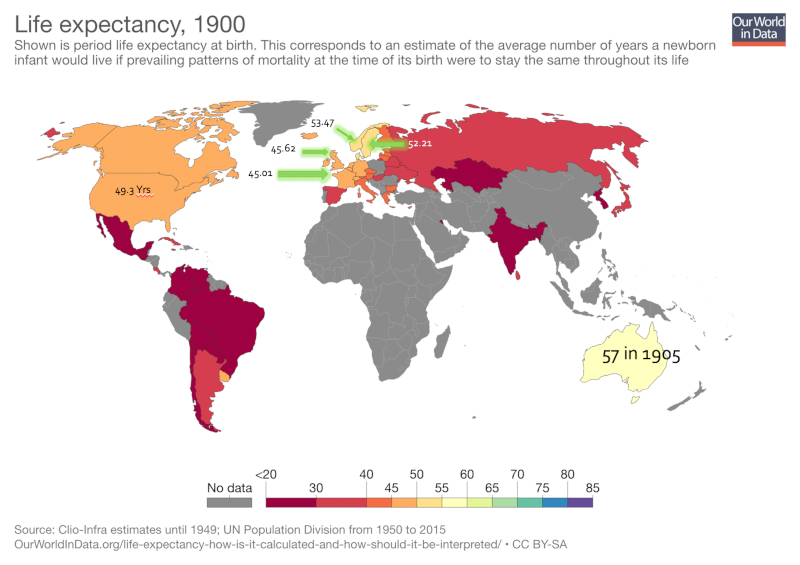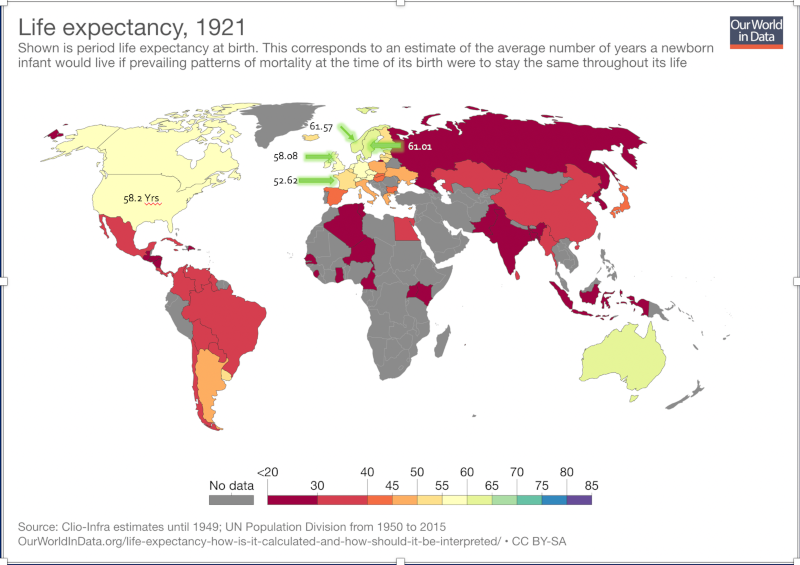One attribute of the supportive research for the hypothesis that age-related macular degeneration (AMD) is caused by processed food consumption is that AMD was a rare disorder between the years 1851 — when it was first discoverable — and about 1930. In fact, no more than about 50 cases of AMD existed in all the world’s literature before 1920, yet there were at least 200 different models of ophthalmoscope available worldwide by 1913, as shown by ophthalmologist Landolt that year. That is, ophthalmologists were examining the retina regularly, worldwide, and they were dilating eyes regularly by the 1880s with six different dilating agents in use by that decade, yet AMD was notably absent from most textbooks of ophthalmology and scientific papers up until the 1930s.
This aspect of the research, that AMD was once a medical rarity, is by no means the only evidence that processed food consumption is the cause of this disease. In fact, the evidence is extraordinary, in my opinion; hence the reason for my book, Ancestral Dietary Strategy to Prevent and Treat Macular Degeneration.
The Hypothesis
For those not familiar with my hypothesis, it is this: The “displacing foods of modern commerce” are the primary and proximate cause of age-related macular degeneration.
To understand just the fundamentals of this hypothesis, wherein the phrase “displacing foods of modern commerce” was derived, and how these manufactured, processed foods are the causative agents of numerous diseases of civilization, including macular degeneration, you might want to read the Introduction and even my book!
A few of the detractors of this hypothesis, i.e., that age-related macular degeneration (AMD) is a disease of processed food consumption, use the old canard that, “we just didn’t live long enough to get AMD back in the 19th century.”
Is this true? Was the life expectancy so low that virtually ‘no one’ lived to be old enough to get AMD in the years 1851 to 1930?
Let’s take a look at life expectancy in the years 1900 and 1921.
On the data maps, the legends indicate life expectancy by color for each country where there is data. I’ve placed the exact figures for those countries ranking amongst the longest life expectancies, specifically, the U.S., France, U.K., Norway, and Sweden.
I’ve heard this assertion that “we didn’t live long enough to develop AMD back then,” a few times over the past couple of years since introducing the hypothesis and, as such, I’ve decided to address the argument, or question, directly.
First, the reason that this argument exists at all is that many people don’t understand the difference between lifespan, perhaps better called maximum lifespan, and life expectancy. Though I’ve understood the fundamental concepts for decades, I too am guilty of misusing the terms. Here, I’ll use the terms and definitions, accurately, I hope, for the first time.
As stated in Wikipedia:
Life expectancy differs from maximum life span. Life expectancy is an average for all people in the population including those who die shortly after birth, those who die in early adulthood (e.g., childbirth, war), and those who live unimpeded until old age. Lifespan is an individual-specific concept maximum lifespan is, therefore, an upper bound rather than an average.2
Life expectancy is, therefore, a statistical measure of the time an individual is expected to live, based on numerous factors including the year of birth, current age, gender, and other demographic factors. The most common use of life expectancy is the measure of life expectancy at birth, also known as LEB.
Lifespan, generally inferred to mean maximum lifespan, is the period of time that an individual would live if they didn’t succumb to conditions that could result in an early demise. These conditions would include infectious diseases, trauma, warfare, accidents, poisoning, etc. We might think of lifespan as the term we would use if we had a perfectly healthy life and died of “old age.”
The oldest confirmed age for any human is currently 122 years and 164 days, which was the age at death for the French-born Jeanne Calment, who lived from 1875 – 1997.3
This is likely is the absolute maximum lifespan for humans.
Understanding Reduced Life Expectancy Around the World
In Swaziland, Africa, LEB is currently only 49 years, whereas, in Japan, LEB currently is 83 years.2
Why the drastic differences?
Swaziland, with 26% of adults affected with HIV and most progressing on to develop AIDS, along with widespread tuberculosis, alcohol and cannabis abuse, sexual violence, and poverty, the otherwise normal life expectancy is drastically reduced. This is an example of such a population having a very short life expectancy at birth, but an otherwise typical lifespan.
Today, poverty alone is strongly associated with chronic diseases and shortened lives, as I’ve shown in my lectures.
This is true, at least in the U.S. and most all developed nations, because processed food is far less costly than whole food — whole food being meats, fowl, fish, eggs, dairy, fruits, vegetables, whole grains, nuts, and seeds. And those people consuming the most processed foods also have the most heart disease deaths, stroke, cancer, type 2 diabetes, hypertension, obesity, and severe vision loss, the bulk of which 54 percent is due to macular degeneration.1
Weston A. Price showed in the 1930s on five continents, wherever there are roads, there is man-made, processed, nutrient-deficient food in the form of refined white wheat flour, sugars, canned goods, sweets, confectionary, and vegetable oils. These are the foods he called the “displacing foods of modern commerce.” And as he discovered, for those who chose to begin consuming the displacing foods, as opposed to their native, traditional foods (whole foods, essentially), they began to develop dental decay and chronic, degenerative diseases such as arthritis and cancer, and they lost immunity to infectious diseases such as tuberculosis.4
Now, if we contrast the situation in Japan to that of Swaziland, Japan is among the most highly educated countries in the world, with one of the highest percentages of citizens holding university degrees. The nation is extremely well-developed and has an extremely high standard of living. Japan is ranked as the world’s third-largest economic force, based on nominal GDP. This is a strong indication of general prosperity. The people enjoy the highest life expectancy in the world again, 83 years and the lowest infant mortality rate in the world.5 And as our research has shown, though they’ve Westernized their diets significantly since the 1960s, they consume far more native, traditional foods than many other developed nations.6 For example, in recent years, they consume roughly half the sugar and vegetable oils as do typical Americans. Sugar and vegetable oils are not only dangerous and deadly processed foods in and of themselves, but they’re also proxy markers for processed foods.
Hopefully, even if this concept is entirely new to you, you’re beginning to see that processed foods have a causative role in numerous “diseases of civilization,” including macular degeneration.
On a worldwide basis before about 1950, life expectancy at birth (LEB) was drastically reduced, due to epidemics, plagues, wars, accidents, infectious disease, and death to both mother and child in childbirth.
In the year 1900, the top three causes of death were all infectious: Pneumonia (or influenza), tuberculosis, and gastrointestinal infections. Coming in at the fourth leading cause of death that year was heart disease. But this was clearly not atherosclerotic disease, that is, coronary artery disease, as the New England Journal of Medicine article clearly denoted that in 1912, “Doctors struggled with… heart disease (chiefly infectious or valvular rather than atherosclerotic)…”7
However, in 2010, seven of the top ten causes of death are chronic metabolic and degenerative diseases, in the form of atherosclerotic heart disease (heart attacks, congestive heart failure, etc.), cancer, noninfectious airways disease (chronic obstructive pulmonary disease, or COPD), cerebrovascular disease (stroke), Alzheimer’s disease, type 2 diabetes, and kidney disease.8
The graphic below, from the New England Journal of Medicine clearly delineates these causes of death at the two points in time, just 110 years apart (1900 versus 2010).

In other words, diseases such as atherosclerotic heart disease, cancer, COPD, Alzheimer’s disease, type 2 diabetes, etc., were all either rare or very uncommon in 1900 yet are commonplace today. As I have frequently alluded to, as have many other nutrition researchers, these are diseases of civilization, that are common to populations consuming Westernized diets.
Notably, as Loren Cordain and S. Boyd Eaton have shown, these diseases remain rare or virtually absent among hunter-gatherer populations.9
Regional Life Expectancy Differences and Economic Circumstances
The World Health Organization (WHO) has determined the “social determinants” of health, and the BBC News reported this with the sub-headline, “Social factors – rather than genetics – are to blame for huge variations in ill health and life expectancy around the world, a report concludes.”
This all comes down primarily to food choice, lifestyle, access to clean water, sewerage, economic circumstances, and medical care. All of these, of course, are intimately related.
One extreme example of this effect of poverty versus affluence on life expectancy in our modern world exists in Glasgow, Scotland. In the severely impoverished Calton area, life expectancy for males is 54, which stands in stark contrast to the life expectancy of 82 in the affluent area of Lenzie, which is just 8 kilometers (5 miles) away.10
In a similar way, in London’s wealthy Hampstead, life expectancy is 11 years longer than in nearby St. Pancras.9
A girl born in Lesotho, Africa, is likely to live 42 years less than a girl born in Japan.9
Now, after that digression, let’s get back to life expectancy and lifespan so that we can, hopefully, dispel the myths and understand the statistics in a meaningful way.
Hypothetical Population Examples of Life Expectancy
Consider this: In a hypothetical population in which 40% of the children die at age two but the other 60% of the population survives to age 80, the life expectancy at birth is still only 48.8 years. This example is strongly indicative of the situation in the U.S. during the 19th century. Shortly, we’ll examine why.
I have listened to highly intelligent physicians, health practitioners, and others, who mistakenly conclude, and might I say, with gross misrepresentation, that populations with an average life expectancy of fifty, have very few old people. I could quote a few such remarks and writings on the subject, even made to me, but I’ll not disparage these often well-intentioned people.
One should never, ever conclude that a population with a LEB of only 50, for example, has few people over the age of 70. If that population has a high infant and childhood mortality rate, a high death rate from infectious disease, trauma, warfare, and the like, 20% or more of the population might still be surviving beyond age 70. Generally, very few people in the population will be dying around the age of 50. Rather, many will die at very young ages and a smaller segment will live into their 70s, 80s, and beyond.
Let’s also dispel the myth that people mysteriously “got old” at an early age in previous centuries. Or that if they were in their late 40s or 50s, that they were just old and dying. This is an absolute fallacy. The proof is coming up.
I’ve often thought of it this way, given the research I’ve done: If a man lives to be 80 but his only son dies at age 2, the life expectancy of this family of two is just 41 years. If in the same scenario, the man has a wife who dies at age 70, now the average expectancy (or average lifespan of the three) is 50.7 years. But this is just the average age of death of this family of three and does not represent the modal (most common) age of death. This — and this alone — given the very high incidence of death at birth or in childhood as well as the high risk of maternal death in childbirth, historically, drops the average age of death dramatically.
________
This is Part One of a Three-Part Series.
See Part Two here.
See Part Three here.
References
- Knobbe, CA. (2016) Ancestral Dietary Strategy to Prevent and Treat Macular Degeneration. Springville, Utah: Vervante Corporation, pp. 14-30
- “Life expectancy,” Wikipedia, (n.d.). Retrieved from Wikipedia, Life Expectancy
- “Jeanne Calment,” Wikipedia, (n.d.). Retrieved from Wikipedia, Jeanne Calment
- Price, Weston A. 2003. Nutrition and Physical Degeneration. La Mesa, CA: Price-Pottenger Nutrition Foundation
- “Japan,” Wikipedia, (n.d.), Retrieved from Wikipedia.org
- Knobbe, CA. (2016) Ancestral Dietary Strategy to Prevent and Treat Macular Degeneration. Springville, Utah: Vervante Corporation, pp. 123-125
- Jones DS, Podolsky SH, Greene JA. The Burden of Disease and the Changing Task of Medicine. N Engl J Med 2012; 366:2333-2338 DOI: 10.1056/NEJMp1113569
- Ibid
- Cordain L, Eaton SB, Sebastian A, et al. Origins and evolution of the Western diet: health implications for the 21st century. Amer J Clin Nutr. 2005; 81(2)341-354
- “Social factors key to ill health.” BBC News. August 28, 2008. Presented August 28, 2008. Retrieved from BBC News
- Max Roser (2018) – “Life Expectancy”. Published online at OurWorldInData.org. Retrieved from Our World in Data [Online Resource]
- Max Roser (2018) – “Child Mortality”. Published online at OurWorldInData.org. Retrieved from Our World in Data [Online Resource]
- Cellania M. “The Historical Horror of Childbirth.”(May 9, 2013) MentalFloss.com. Available from Mental Floss
- Lancaster HO. Expectations of Life A Study in the Demography, Statistics, and History of World Mortality. New York, NY, Springer-Verlag, p. 8
- Jaques, R. Kevin. (2006). Authority, Conflict, and the Transmission of Diversity in Medieval Islamic Law. Brill Publishers., p. 188. ISBN 978900414754
- Ahmad, Ahmad Atif (2007), “Authority, Conflict, and the Transmission of Diversity in Medieval Islamic Law by R. Kevin Jaques,” Journal of Islamic Studies. 18(2):246-248, doi:10.1093/jis/etm005
- Bulliet, Richard W. (1983), “The Age Structure of Medieval Islamic Education,” Studia Islamica, 57:105-117, doi:10.2307/1595484
- Shatzmiller, Maya (1994), Labour in the Medieval Islamic World, Brill Publishers, p. 66, ISBN: 9004098968
- Guyenet S. “Mortality and Lifespan of the Inuit.” Whole Health Source, (July 5, 2008), Retrieved from wholehealthsource.blogspot.com
- Gurven M, Kaplan H. Longevity Among Hunter-Gatherers: A Cross-Cultural Examination. Population and Development Review, 29 May 2007, https://doi.org/10.1111/j.1728-4457.2007.00171.x
- “List of Presidents of the United States by date of death,” Wikipedia, (n.d.). Retrieved from Wikipedia, List of Presidents
- “List of Presidents of the United States,” Wikipedia, (n.d.). Retrieved from Wikipedia, List of Presidents
- “Hippocrates Biography.” Biography, (n.d.), Retrieved from https://www.biography.com/
- Knobbe, CA. (2016) Ancestral Dietary Strategy to Prevent and Treat Macular Degeneration. Springville, Utah: Vervante Corporation, p. 21



